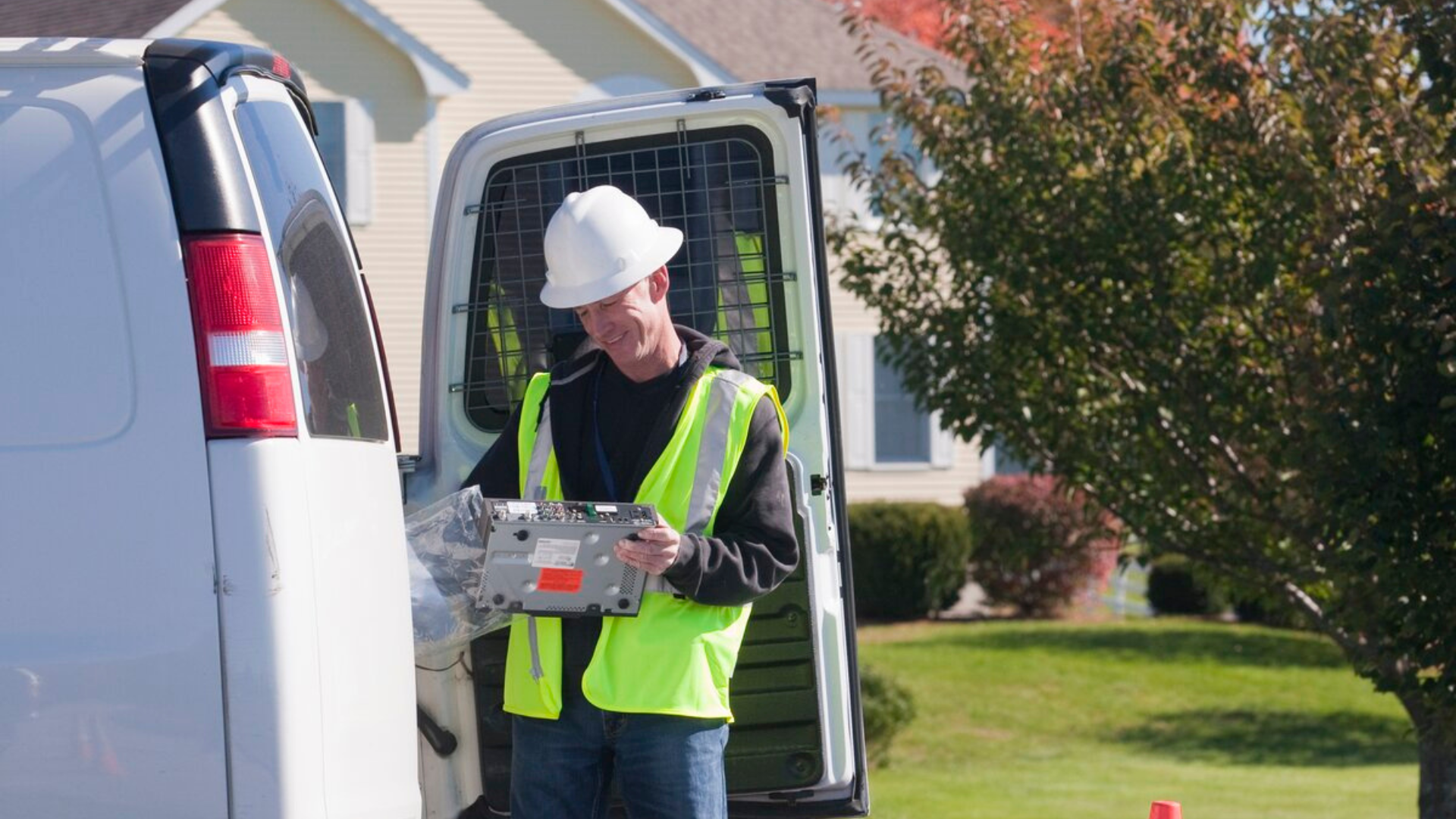How to reduce the carbon footprint of your current vehicles

Nov 5, 2025

Organisations with fleets of vehicles that transport technicians, goods and services to their customer locations fall under the umbrella term “field services”. For sustainability teams managing field service operations, internal combustion engine (ICE) vehicles - whether diesel or petrol - often still form the backbone of day-to-day activities. While fleet electrification remains a critical long-term goal, many organisations are prioritising more immediate actions to reduce their Scope 1 emissions without requiring significant capital investment.
The good news is that there are proven ways to achieve rapid, measurable reductions in emissions from your existing fleet. With the right data and operational focus, it's possible to reduce fuel consumption and emissions by 10–15% before introducing a single EV. In this article, we explore how ICE fleets can drive meaningful carbon reductions through better visibility, smarter operations, and more engaged drivers.
Know your baseline: turn data into insight
Effective carbon reduction starts with clear, granular, accurate data. Telematics platforms give fleet managers access to powerful insights at both the vehicle and fleet level, helping you monitor and benchmark key emissions factors, including:
- Fuel consumption and efficiency
- Greenhouse gas (GHG) emissions
- Idling patterns and durations
- Driver safety and eco-performance
- Maintenance costs and downtime
- Asset utilisation and productivity
This data supports Scope 1 emissions reporting and helps pinpoint the greatest opportunities for reducing fuel use. It also lays the groundwork for right-sizing your fleet, engaging drivers, and identifying suitable candidates for electrification.
Put drivers at the centre of your emissions-reduction strategy
Driver behaviour is one of the biggest levers for cutting emissions. With insight into how drivers perform on the road, you can introduce programmes that encourage fuel-efficient habits, such as:
- Including eco-driving in ongoing driver training
- Providing in-cab feedback to correct behaviour in real-time
- Sharing eco-driver dashboards
- Introducing league tables and gamification
- Linking efficient driving to incentives and rewards
Fleets that invest in these areas can achieve fuel and emissions savings of up to 15%, while building a positive, performance-based culture.
| Geotab success story The Euroloo operations team reduced idling fuel consumption by 22% in the first six months since implementation by monitoring MyGeotab’s idling reports and providing feedback to the drivers. This has improved overall fuel efficiency, reduced costs and improved the sustainability performance of the fleet by reducing the emission of human health-impacting air pollutants, and carbon dioxide (CO2). |
Implement a predictive maintenance programme
A well-maintained vehicle is a more efficient vehicle. Predictive maintenance supported by real-time diagnostic insights ensures vehicles remain roadworthy, reliable, and more fuel economical. With access to real-time diagnostic trouble code (DTC) reporting, you can:
- Base service intervals on actual usage, not calendar time
- Detect early warning signs before they escalate
- Reduce unscheduled downtime with better planning
- Prevent avoidable wear and tear that leads to excess emissions
This proactive approach not only extends asset life, but also reduces the carbon footprint of day-to-day operations by mitigating preventable emissions from poorer engine performance.
Use fewer vehicles, more efficiently
Cutting emissions isn’t only about individual vehicles - it’s also about using your entire fleet more intelligently. By focusing on utilisation and efficiency, you can reduce the overall carbon intensity of your operations. This can include:
- Identifying underused assets
- Considering vehicle sharing
- Consolidating trips or reworking schedules
- Optimising loads and reviewing stock levels
Higher utilisation also means that when you transition to electric vehicles, they will deliver faster ROI, since their lower running costs become more impactful when they’re working harder.
Check your tyres
Tyre pressure plays a surprisingly important role in both fuel economy and emissions. Just 10 psi under the recommended level can reduce fuel efficiency by 1–2% and cause faster tyre degradation.
Using TPMS (Tyre Pressure Monitoring Systems) or building regular pressure monitoring into your driver checks can help cut emissions and fuel costs.
Lay strong foundations for future electrification
Before any EV is deployed, there’s a clear opportunity to improve the efficiency and sustainability of your existing ICE fleet. The most effective field service fleets treat fuel economy, driver behaviour and predictive maintenance as integral to operational performance, not just sustainability.
Taking action now not only reduces Scope 1 emissions in the short term, but also sets the stage for a more cost-effective and successful transition to electric vehicles when the time is right.
Want to learn how to reduce emissions from your existing ICE fleet?
Download the free Field Service Fleet Sustainability Playbook today.
Subscribe to the Geotab Blog

Senior Marketing Specialist, SWE at Geotab
Related posts

How integrated data can help fleets scale up their EVs
November 5, 2025
2 minute read


Practical strategies for bus fleets to cut fuel costs and carbon emissions
November 3, 2025
2 minute read

The need for unified EV data to maintain electric bus condition
November 3, 2025
2 minute read

Building safer bus operations with customisable telematics
November 3, 2025
2 minute read

How predictive maintenance helps bus workshops cut downtime and costs
November 3, 2025
2 minute read